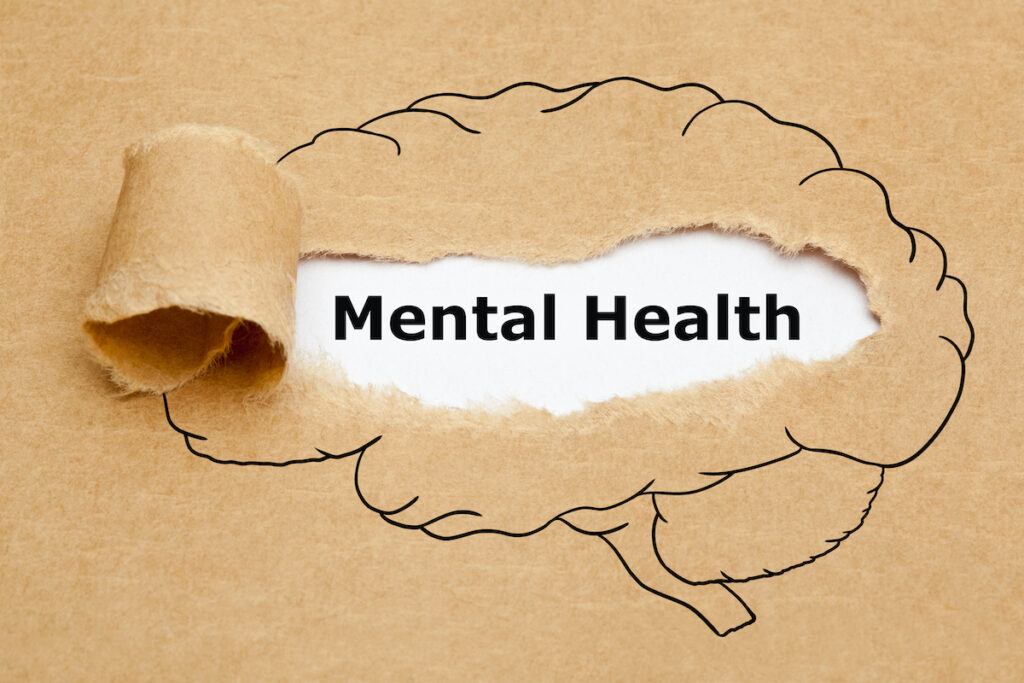
We know the story well now. It’s become almost like an old song that we can sing along in harmony. People with mental disorders die younger, the life expectancy gap is not improving, and most people with mental disorders die from physical health complications (Saha S. et al., 2007 and Walker et al., 2015).
Increasingly, the importance of physical health conditions in people with mental disorders has been acknowledged. For example, the 2015 NICE quality standard for psychosis and schizophrenia in adults focused two of its eight quality statements on topics related to physical wellbeing (Huda, 2015);
Adults with psychosis or schizophrenia have specific comprehensive physical health assessments.
and
Adults with psychosis or schizophrenia are offered combined healthy eating and physical activity programmes, and help to stop smoking.
More recently, Firth and colleague published a landmark blueprint to improve the physical health of people with mental disorders (Firth et al, 2019).
So, we know why we need to care about the physical health conditions in people with mental disorders (the mortality gap). We now know what we need to do (improve the care provision in multiple domains). But as a psychiatrist standing in front of a patient, we are often lost as to how we can achieve this.
This is where this new textbook by Taylor, Gaughran, Pillinger (2021): Maudsley Practice Guidelines for Physical Health Conditions in Psychiatry – a masterpiece consisting of 89 chapters – comes in handy.

Most people with mental disorders die from physical health complications. What is our role in tackling mental health inequalities and how can we achieve this?
Overview
Part 1 Cardiology – The book begins with cardiology. Here’s the heart of the matter. It starts with a fast heartbeat (tachycardia) and slow heartbeat (bradycardia) then explores a couple of ways by which the beat can get funky (QT interval prolongation and syncope). We look at what raises the blood pressure (hypertension) and how it falls (postural hypotension). We talk about a couple of pumping issues (peripheral oedema and myocarditis) before finishing the section with two important modifiable risk factors: hypercholesterolemia and physical activity.
Part 2 Endocrinology – We then come to endocrinology. Also known as metabolic disorders, the metabolic risks for people with mental disorders are well documented (e.g. see: Vancampfort et al, 2016). This section starts off with diabetes mellitus, follows up with two common hormonal disturbances in thyroid disease and hyperprolactinaemia, before finishing off with a user-friendly chapter on the vital topic of obesity.
Part 3 Haematology – Next, we move on to the often under-recognised field of haematology (except with people on clozapine). The book talks about low haemoglobin (anaemia), low white cell count (neutropenia), low platelet (thrombocytopenia), and clots (venous thromboembolism and anticoagulation).
Part 4 Gastroenterology – In the surprisingly rich contour of gastroenterology, we move through chapters on gastro-oesophageal reflux and peptic ulcer disease, gastrointestinal bleeding, nausea and vomiting, dysphagia, deranged liver function tests, alcohol and physical health, unintentional weight loss, dry mouth, hypersalivation, and constipation.
Part 5 Renal and urology – Continuing on with the theme of secretion, we explore renal and urological conditions including: urinary retention, urinary incontinence, polyuria, sodium derangement, potassium derangement, and chronic kidney disease.
Part 6 Sexual and reproductive health – Talking about the biology of sex is something we psychiatrists do poorly. This section guides you through sexual dysfunction, contraception, infertility and sexually transmitted infection.
Part 7 Infectious disease – We then explore various infections of lungs (pneumonia and influenza), urinary tract (urinary tract infection), gut (gastroenteritis), liver (viral hepatitis), then two systematic infections; tuberculosis and human immunodeficiency virus.
Part 8 Respiratory – This section starts with arguably the most potent modifiable risk factor for any physical condition – smoking, then goes through three common and treatable respiratory conditions: chronic obstructive pulmonary disease, asthma, and obstructive sleep apnoea.
Part 9 Neurology – We then move back to the more familiar discipline of neurology. Mind is what the brain does. Sigmund Freud was a neurologist after all. This section covers delirium, autoimmune encephalitis, catatonia, seizure disorders, headache, disorders of sleep and circadian rhythm, extrapyramidal side effects, tardive dyskinesia, and tremor. Many of these we regularly encounter in our psychiatry practice.
Part 10 Rheumatology and musculoskeletal health – For the following four parts, we swiftly move through rheumatology and musculoskeletal health (low back pain and arthritis).
Part 11 Ophthalmology – Focus on eye disease.
Part 12 Obstetrics and gynaecology – Focus on pregnancy and menopause.
Part 13 Dermatology – General dermatology, and psychodermatology.
Part 14 Electroconvulsive therapy – This chapter focuses on electroconvulsive therapy used to treat mental health difficulties.
Part 15 Emergencies – The book finishes off with the section on emergency issues that can happen anywhere, anytime, to anyone. This part includes; chest pain, acute shortness of breath, acute coronary syndrome, arrhythmia, hypertensive crisis, sepsis, acute kidney injury, diabetic emergencies, acute upper gastrointestinal bleeding, status epilepticus, anaphylaxis, reduced consciousness and coma, thyroid emergencies, head injury, acute meningitis and infective encephalitis, stroke and transient ischaemic attack, overdose, acute dystonia, neuroleptic malignant syndrome, serotonin syndrome, emergencies in obstetrics and gynaecology, the acute abdomen, and finally, the ABCDE approach.

Psychiatrists can improve their provision of care to people with mental health difficulties by taking into consideration multiple domains of physical health, including cardiological, endocrinological, dermatological, sexual and reproductive difficulties, gynaecological, neurological and respiratory problems.
Strengths and limitations
This is an impressive piece of work. I carried three previous editions of Professor Taylor’s Maudsley Prescribing Guidelines in my bag for the past ten years, and I suspect many psychiatrists and trainees have done and will do, the same. I suspect that the editors – David Taylor, Fiona Gaughran, and Toby Pillinger – have created a similar classic textbook.
In response to a common question many of us have; “Yes, we know that physical health is important for our patients, but what can we do? I don’t even know where my stethoscope is anymore!”, the editors have meticulously gathered large amounts of expertise in different fields, and created a user-friendly textbook. “Here you go, my friend, there’s no excuse not to think about the physical health of our patients anymore.”
Each chapter is short – around five pages – and written for someone whose background knowledge may be based on an ancient edition of Harrison’s sitting in a box somewhere in the basement (which they never really read anyway). Most chapters have specific points on what a psychiatrist may be able to do, and when a psychiatrist should step out and let others take over. This is important, because as a professional cohort, we psychiatrists, tend to linger around the edges of many areas of expertise (e.g. neuroscience, talking therapy, public health, and education) without ever being proper experts in any of them. Put differently, we overpromise and underdeliver. This book inherently appreciates this tendency and is clear on the boundaries of expected capability.
I am in awe of the book, so it’s hard to find limitations. I suppose there are always more physical conditions one can talk about. Like John Mayer says, your body is a wonderland, and there are many ways in which you can get lost. But as the Pareto Principle stipulates, 80% of physical conditions likely stem from 20% of diseases, and I think the book covers more than 20% of common physical conditions encountered in psychiatry.
If I was a totally new age millennial, I might wonder if there’s going to be an app version of the textbook – all 700 plus pages stacked on your phone, where you can navigate with keywords and a couple of touches. But I’m an old school millennial, I like the feeling of carrying the 2kg of knowledge in my bag, picking it up and looking for relevant chapters using the index, and highlighting things, photocopying pages, and watching the book get withered and wrinkled until I buy the next edition in a couple of years.

Most chapters have specific points on what a psychiatrist may be able to do, and when a psychiatrist should step out and let others take over.
Implications for practice
Here are things I started doing since I started reading the Maudsley Practice Guidelines for Physical Health Conditions in Psychiatry:
- I started carrying it in my bag, next to my copy of the Maudsley Prescribing Guidelines. I think my shoulders are getting broader with the weight of two books together
- I started thinking about modifiable risk factors like physical activity, obesity and smoking in a lot more systematic manner
- I have thought about buying a brand-new stethoscope and taking a course in general practice (then I saw the cost and backed out)
- But I did buy a couple of copies of the Maudsley Guidelines for Physical Health to share with my clinic and trainees.
I took a medical student approach to write this review. I opened the book on page one, attacked each page with my highlighter, and tried to come up with clever punchlines to impress my friends at parties. In practice, this is not how this book should be used. It is more like Sherlock than The Office. Sure, it may help to binge from the start till the end (and you probably get more out of it doing it that way), but each chapter stands well independently on its own.
I often hear people talk about Healthy Body, Healthy Mind in my practice. It is a catchy slogan often attributed to an old Roman or Greek man. As a psychiatrist, I am acutely aware that for most of our patients, their psychological sufferings (or unhealthy mind, if you like) stem from much more than the unhealthiness of the body. At the same time, it is difficult to maintain a healthy body when your mind is suffering. As most of us have seen and experienced, sometimes it is easier to work on getting your body better, rather than diving too deep into what your mind is doing.
When I was a young lad, my grandma always said to me: Look after your body, and your mind will take care of itself. She wasn’t that big on talking about her feelings or problems but she was big on making sure that I was eating three healthy square meals a day and telling me to go easy on smoking, drinking, and gambling. She was also fond of feeding me too much food then complaining that I was getting too fat. When I was sulking about being a misunderstood teenager (which I often did as a teenager), my grandma would tell me to go for a run, and when I got home, there was a hot meal waiting for me. I still felt sully and misunderstood, but I did feel better after eating her macaroni cheese.
So, sit back, relax, and start flicking through the book. Carry it with you and look it up every time you face a physical health condition you are not sure what to do about. If in doubt, go back to ABC (and DE). There is much more to psychiatry than titrating clozapine. There are many other ways to get our patients better than prescribing and talking. I get the kick out of knowing more about physical health conditions than my registrars (and you learn to savour little wins in medicine), but I am sure the benefit of the enhanced knowledge in physical health among psychiatrists is far more than we can ever anticipate.

For most of our patients, their psychological sufferings (or unhealthy mind, if you like) stem from much more than the unhealthiness of the body. At the same time, it is difficult to maintain a healthy body when your mind is suffering.
Conflicts of interest
Shuichi Suetani has received Honoraria from Seqirus.
Links
Primary evidence
Taylor D, Gaughran F, and Pillinger T. (2021) The Maudsley Practice Guidelines for Physical Health Conditions in Psychiatry, First Edition, John Wiley & Sons Ltd.
Other references
Firth J, Siddiqi N, Koyanagi A, Siskind D, et al. (2019) The Lancet Psychiatry Commission: a blueprint for protecting physical health in people with mental illness. Lancet Psychiatry 6 (8) 675 – 712.
Huda S. (2015) Psychosis and schizophrenia in adults: new quality standard from NICE. Mental Elf.
Saha S, Chant D, and McGrath J. (2007) A systematic review of mortality in schizophrenia: Is the differential mortality gap worsening over time? Archive of General Psychiatry 64(10) 1123 -1131.
Vancampfort D, Correll C, Galling B, et al. (2016) Diabetes mellitus in people with schizophrenia, bipolar disorder and major depressive disorder: a systematic review and large scale meta-analysis. World Psychiatry 15 (2) 166 – 174.
Walker E, McGee R, and Druss B. (2015) Mortality in mental disorders and global disease burden implications: A systematic review and meta-analysis. JAMA Psychiatry 72(4): 334 – 341.
Photo credits
- Photo by Christophe Hautier on Unsplash
- Photo by Alex Zamora on Unsplash
- Photo by Sarah Dorweiler on Unsplash

Nothing about dentistry? e.g. some medications cause Xenostomia (dry mouth) that causes gums to deteriorate with consequent loss of teeth.